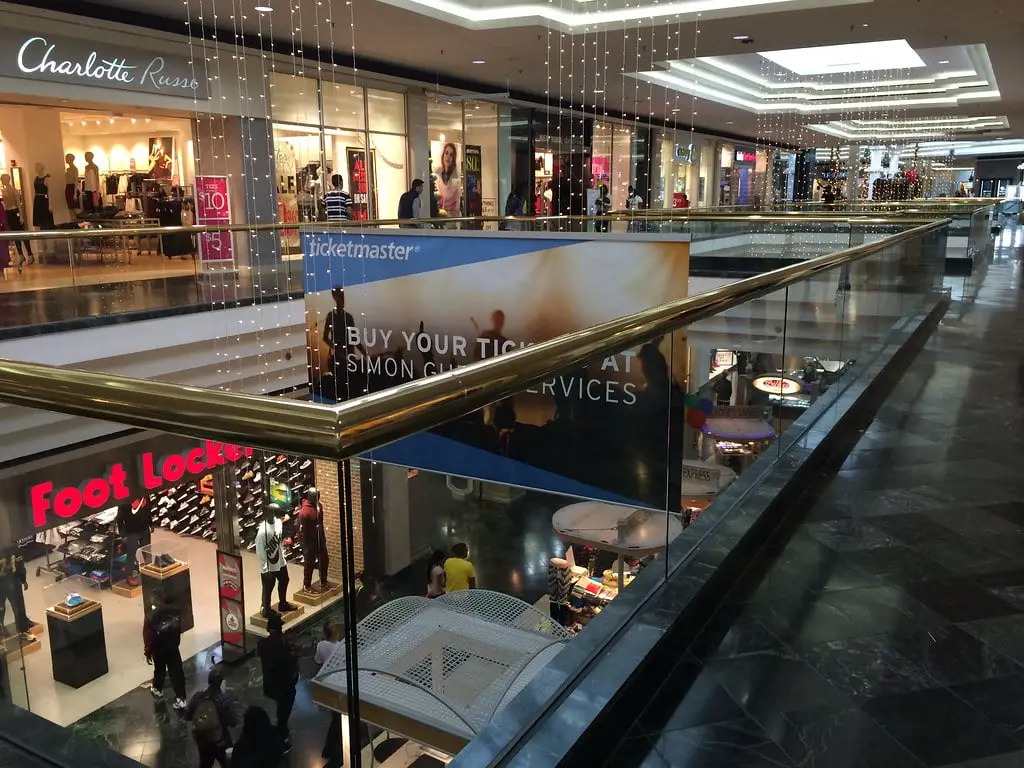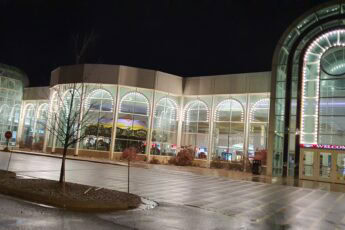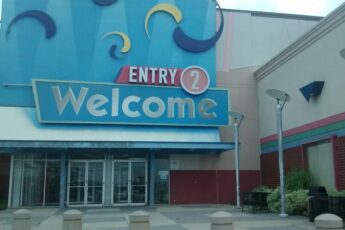Early Planning and Development
In 1985, the Cafaro Company unveiled plans to develop Governor’s Square Mall in Clarksville, Tennessee.
The project aimed to establish a new retail center at Exit 4 on Interstate 24, an area with little commercial activity at the time. Initial estimates placed the construction cost at $40 million.
However, by the time the mall opened on October 29, 1986, the total investment had climbed to $50 million.
Governor’s Square Mall was designed as a single-story, enclosed shopping center with over 800,000 square feet of retail space.
The mall’s early retail lineup included major anchor stores such as Sears, JCPenney, and Snyder’s.
These stores were selected to draw in a diverse range of shoppers from the surrounding regions.
The area around the mall, largely undeveloped before construction began, quickly became a focal point for new commercial and retail investments.
As Governor’s Square Mall took shape, it attracted attention from other retailers looking to capitalize on the anticipated increase in shopper traffic.
The mall’s opening marked the beginning of a broader transformation of the Exit 4 area into a bustling commercial district.
By August 1987, the mall had 66 tenants.
Stores like Kay-Bee Toys, The Limited, and Foot Locker offered a broad range of products, catering to shoppers’ diverse needs.
By 1990, the mall had reached a 92% occupancy rate and hosted 98 stores.
This early period set the stage for Governor’s Square Mall to become a dominant force in the local retail landscape.
Expansion and Changes in Tenants
The early 1990s brought changes to Governor’s Square Mall as new tenants moved in and existing ones expanded.
Dillard’s opened a store in 1994, adding another anchor to the mall’s growing list.
This addition helped maintain the mall’s appeal, attracting more upscale shoppers.
The original anchor, Snyder’s, transformed into Hess’s before eventually being divided into two separate stores: Borders Books & Music and Goody’s Family Clothing.
Borders provided a destination for book lovers, while Goody’s offered affordable clothing for families.
In the early 1990s, retailers like Walmart and Target opened stores nearby, drawn by the increased traffic generated by the mall.
Real estate developers saw an opportunity and started building shopping plazas, strip malls, and other commercial properties.
This wave of development provided a boost to the local economy, creating jobs and increasing the area’s appeal to both shoppers and businesses.
A food court was also added during this period, providing a space for shoppers to take a break and grab a bite to eat.
Fast food chains like Chick-fil-A and Subway became popular choices for visitors.
These changes helped keep the mall competitive, offering more than just shopping, a place to spend an entire day.
However, the retail landscape continued to evolve.
Borders eventually closed its doors in 2011, reflecting broader challenges in the book retail industry.
Ross Dress for Less took over the space in 2013, bringing in a different type of customer looking for discounted fashion.
This constant evolution of tenants is a testament to the mall’s ability to adapt to changing market demands while maintaining its relevance as a key shopping destination.
Challenges and Store Closures
Like many malls across the country, Governor’s Square Mall faced its share of challenges.
Sears, one of the original anchor stores, closed its doors in October 2018 as part of a nationwide downsizing effort.
This closure marked a turning point for the mall.
It wasn’t just the loss of a major tenant but also a sign of the broader struggles facing the retail industry.
The space left by Sears stood as a reminder of how quickly things could change.
But the mall didn’t stay stagnant. In September 2021, Burlington moved into the former Sears location, breathing new life into that part of the mall.
This move highlighted the mall’s ability to adapt to the changing retail environment.
Burlington’s arrival attracted a different type of shopper, helping to keep foot traffic steady.
Other stores also came and went during this period.
Chains like Payless ShoeSource and RadioShack closed as part of broader company shutdowns.
These closures were challenges, but they also created opportunities for new retailers to move in.
Major Renovations and Future Plans
Governor’s Square Mall in Clarksville, TN, has embarked on a new chapter with a series of major renovations announced in 2024.
These changes are part of a multimillion-dollar investment aimed at revitalizing the mall, ensuring its relevance in a rapidly changing retail environment.
In June 2024, the mall unveiled plans for a comprehensive transformation that includes both aesthetic upgrades and the introduction of new amenities.
These renovations are designed to enhance the shopping experience, attract more visitors, and better serve the local community.

Among the most notable changes is the introduction of a new Dave & Buster’s, which is expected to be a major draw for families and young adults seeking entertainment options.
The renovation also includes a complete overhaul of the mall’s interior design, with modernized common areas, updated lighting, and new seating arrangements to create a more welcoming environment.
The exterior of the mall will also see improvements, with plans to update the facade and signage to give the mall a fresh, contemporary look.
These renovations are seen as necessary to compete with other shopping centers and online retailers.
With these changes, Governor’s Square Mall aims to position itself as a premier shopping and entertainment destination in Montgomery County and the broader Middle Tennessee region.

















